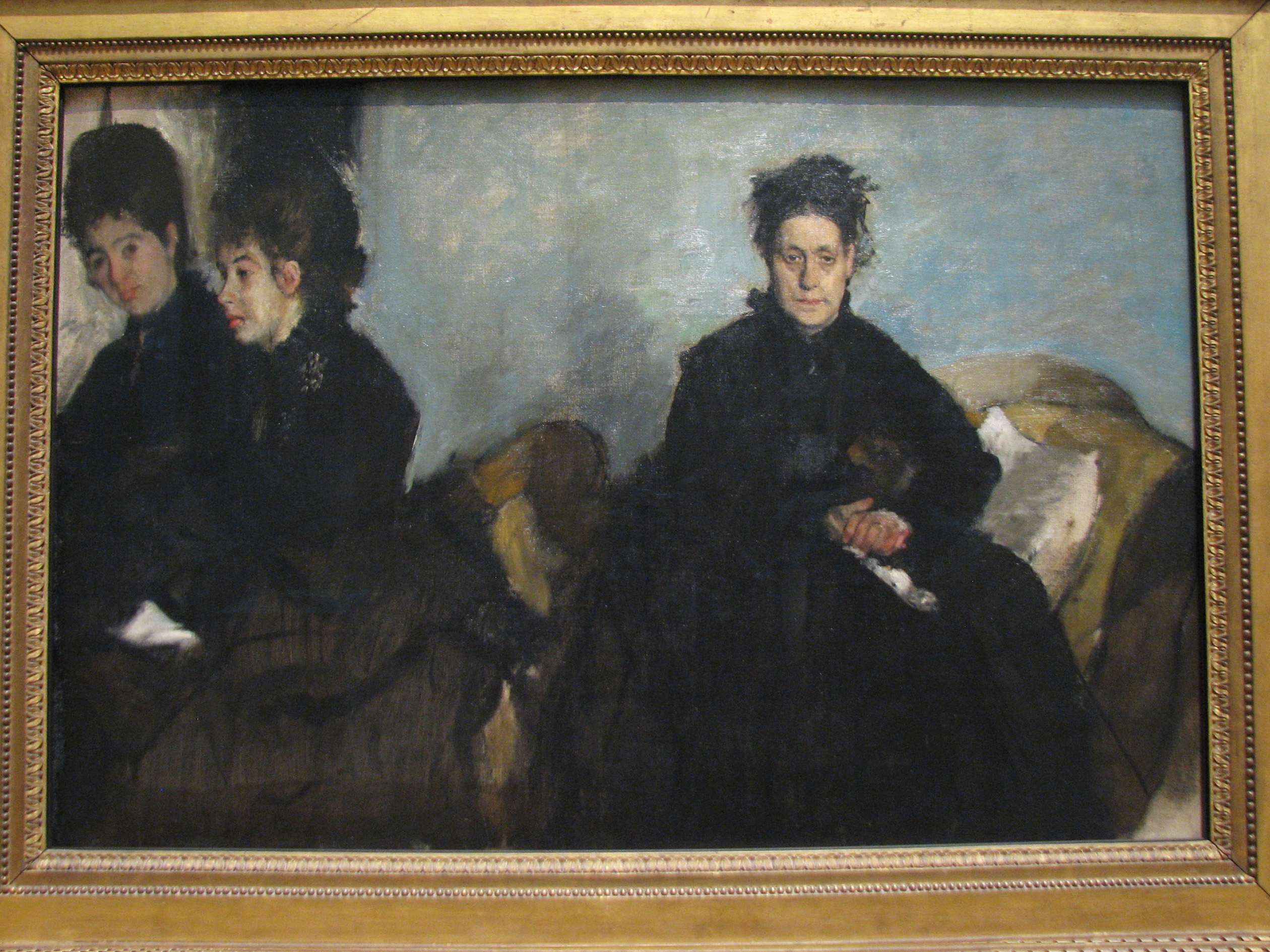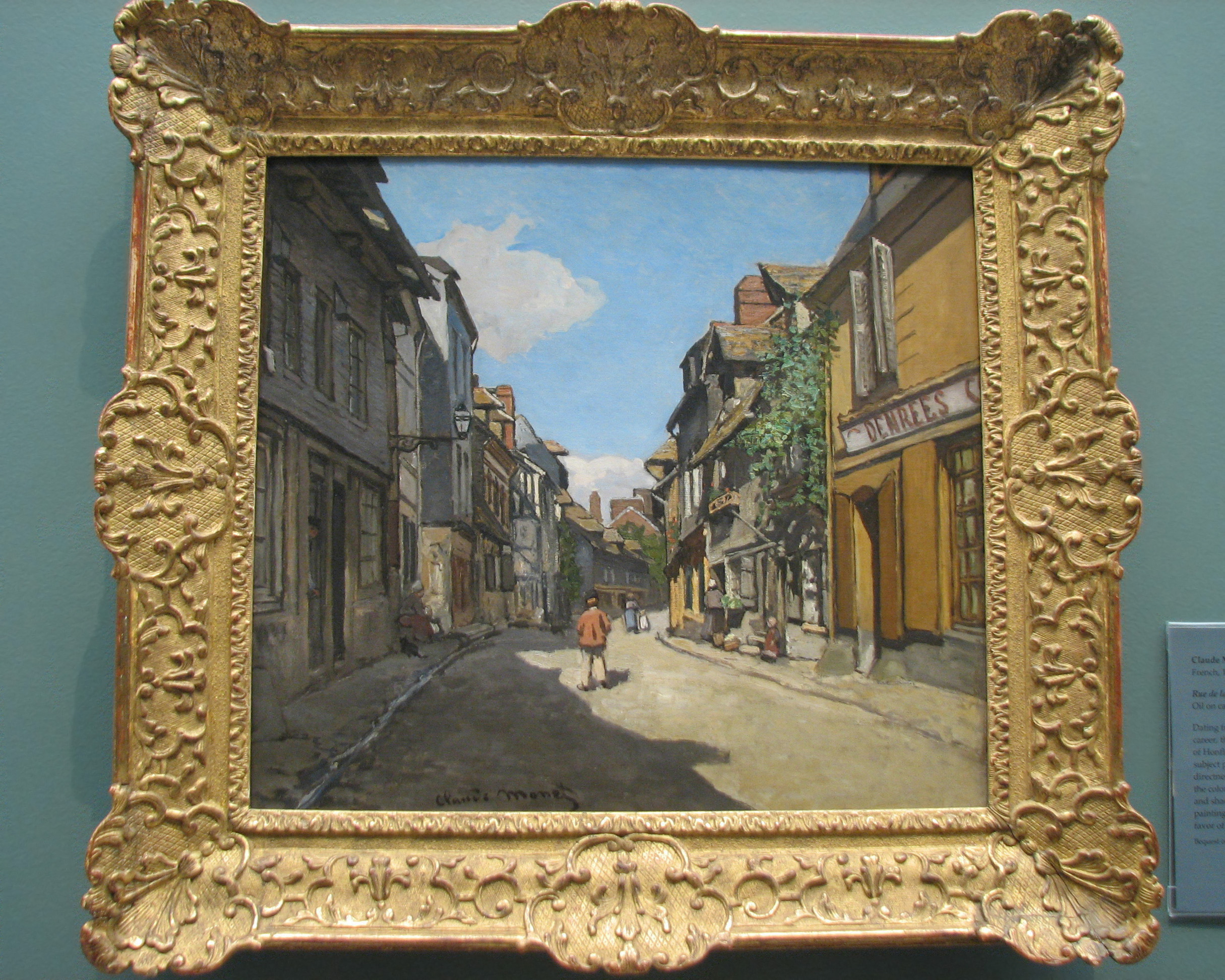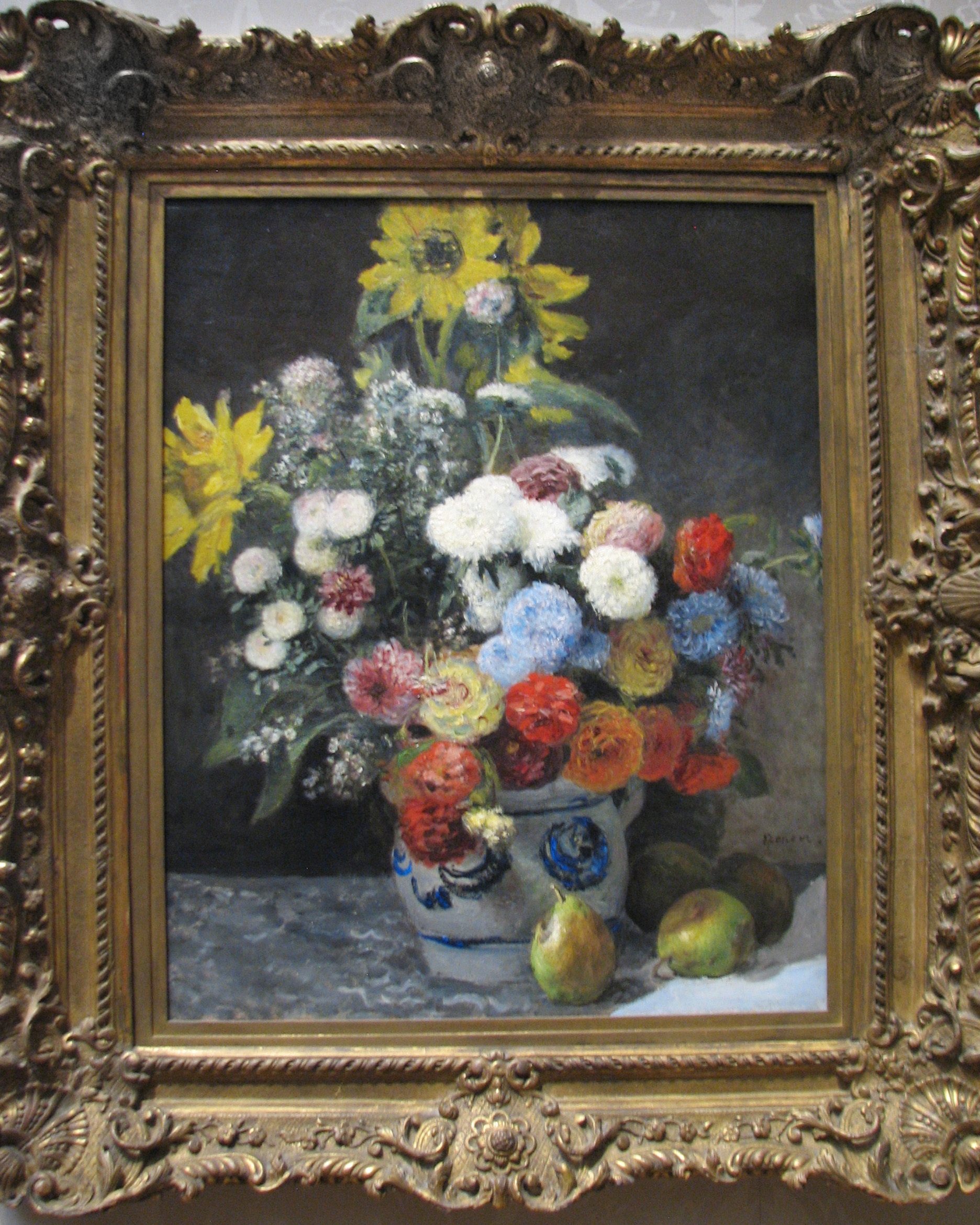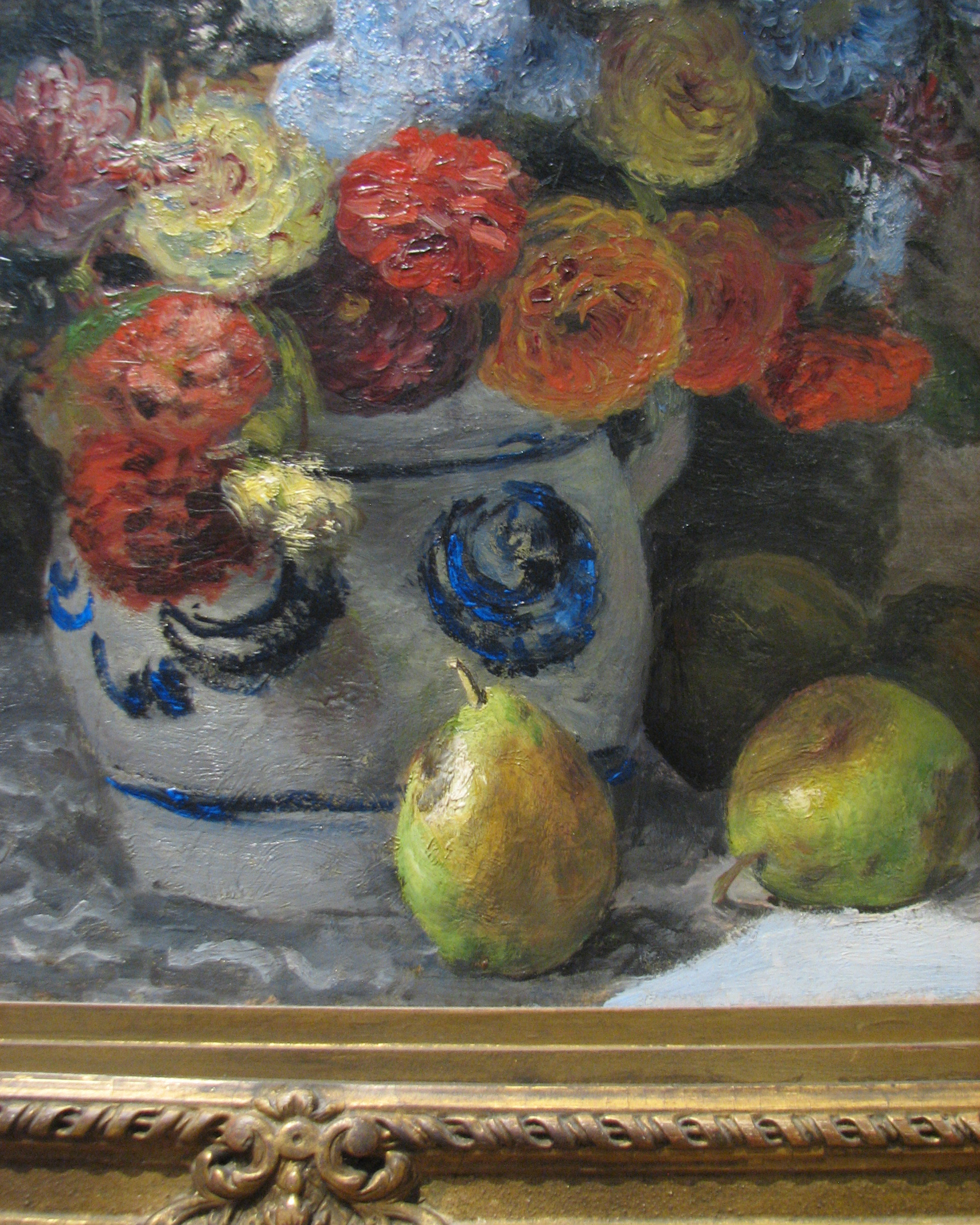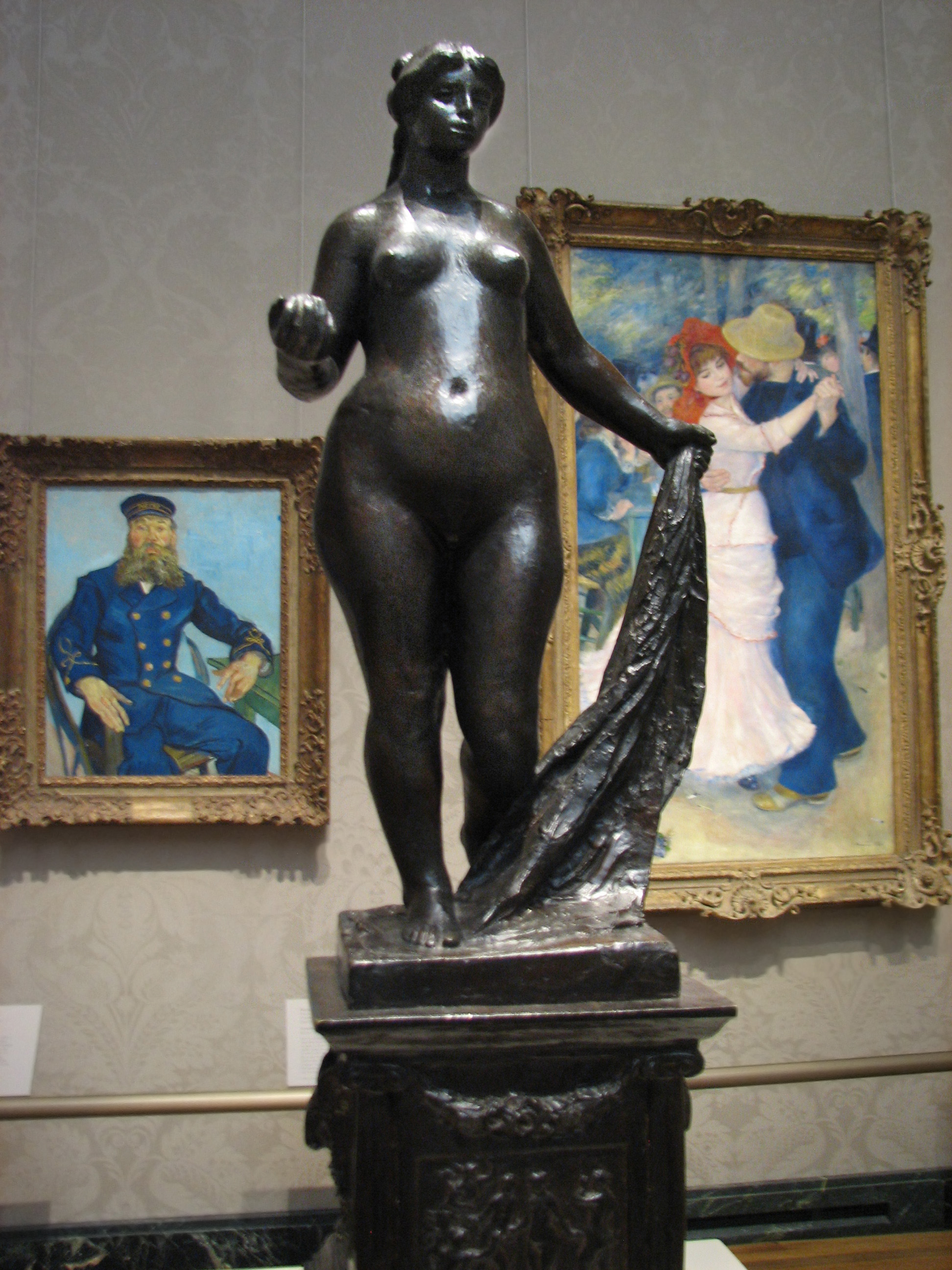After that photo, the camera was tucked back into its case. If I were an obsessed sort of person, we might have left to purchase another memory card and then returned. But I am not that obsessed. I decided the best thing to do was spend as much time before each piece as I could, and just 'drink' it into my soul. (Feed the Ka! :D )
And I did! After the Impressionists, we went back in time. A scene by Turner of the unfortunate slaves on the Zong slave ship, whose starved bodies were dumped into the ocean stays with me, red luminous angry sky, choppy devouring ocean.
We'd learned about this incident in the movie Belle. It was a turning point leading to gradually ending slavery in Britain.
What next stays with me is Rembrandt's luminous portrayal of Minerva. I'd seen this one prior in web-photos, but nothing can substitut for direct experience. Fortunately, there's a padded bench nearby where Julia and I sat a long time, appreciating this and other paintings by Rembrandt. A husband and wife, each in ruffs, each with their own painting, were to each side of Minerva. Rembrandt had some amazing tiny paintings, he and some other Dutch artist. An interior scene with a beloved pet dog, his fur so perfect, how did they manage such tiny perfection?
After the restoration of lunch (salmon with artichokes and leeks for both Julia and I, potato salad for me and chilled gazpacho soup for Julia), we headed for 'art of the Americas'.
I marveled at the intricate perfection of the arts and crafts movement.
Somehow the memory of a quatrefoil pitcher,(screen capture here if museum website is 'down'), first silver piece MFA ever acquired, is getting merged with the Art Nouveau perfection of Josef Hoffman, who was Austrian. A tiny blue and clear glass cup and saucer, created with the blue layer over the clear, and then the blue being carved away to reveal a 'plaid' design.
And the cabinetry! A cabinet that looked positively alive and undulating had vines travelling all around it.
I've gained new appreciation for Sargent. Amazing portraits of women, whose eternally youthful faces gaze out at the viewer in tranquil ease. And an artist I've never heard of, Tarbell! I remember a sunset scene of Boston Commons that enchanted me.
All the displays nicely combine paintings with furniture and vases, bowls, lamps of the era, to really give a sense of the aesthetics.
So much beauty!
Sometime after the American Impressionists but before the Copley and the 'painting Peales', we grew weary. There was maybe only a half an hour before the museum closed anyway. 'Home' to get another of the delicious damascus date shakes. and then to nap a bit.
After resting, we took advantage of a Mensan lecture, "Future Sex", by Dr. Helen Fisher. She has a new way of testing and catagorizing people:

